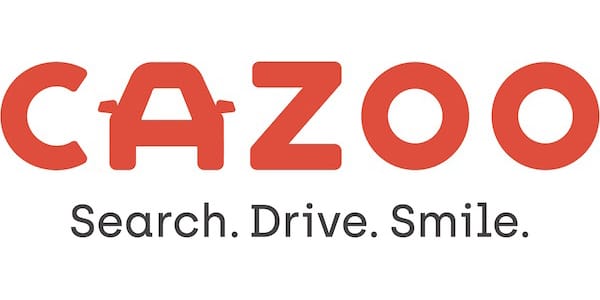For the third time in 12 months, Dacia has received unflattering headlines about the safety of its cars.
This week, the new Dacia Jogger was awarded a paltry one-star safety rating by the world’s leading independent safety body, Euro NCAP. Back in December, the Dacia Spring electric small SUV (not yet sold in the UK but apparently on its way soon) also received a one-star score. And last April, the Dacia Sandero and Sandero Stepway range scored two stars and incurred the embarrassment of having its What Car? Car of the Year award revoked as a result.
The best-performing car in the current Dacia range when it comes to safety is the Dacia Duster small SUV, which has a three-star safety rating – although that comes with the caveat that the testing was done back in 2017. Euro NCAP standards have become tougher since then and the Duster, like the other models in the Dacia range, does not have the standard safety equipment required to earn a three-star rating if it was reppraised today.
Dacia is owned by Renault Group, with its current models based on existing Renault vehicles. Four months ago, I wrote a piece entitled “Renault needs to lift its game on safety” after the Renault Zoe scored zero stars from Euro NCAP and the Dacia Spring scored only one star. Sadly, not much has changed and Renault’s attitude seems to be that it doesn’t care about Dacia’s safety scores.
Dacia Jogger Euro NCAP score
Independent crash test and safety ratings from Euro NCAP
Overall score: 1 stars
Date tested: April 2022
Read the full Euro NCAP review
Adult protection: 70%
Child protection: 69%
Vulnerable road users: 41%
Safety assist: 39%
Why did the Dacia Jogger perform so poorly?
The Dacia Jogger is essentially an enlarged version of the Dacia Sandero Stepway, which scored two stars from Euro NCAP last April. So it wasn’t a very good starting point, and the alterations to make the Jogger a compact seven-seat vehicle have detracted from the Sandero’s already sub-par safety rating.
The Sandero performed reasonably well in its impact tests – Euro NCAP suggested that it performed equivalently to a four-star car for both adult and child protection. The big problem was a serious lack of accident avoidance equipment, which meant that the overall score ended up at two stars.
The principal difference between the Jogger and the Sandero is an extra pair of third-row seats*, which is one of the main attractions of the Jogger – it’s the cheapest seven-seat car on sale in the UK. However, those two extra seats are problematic in safety terms.
The two rear seats do not have any seatbelt warnings to alert the driver if a passenger is not wearing their belt. And, more crucially, the head airbags that protect the front- and middle-row occupants do not extend to the rear seats, so the third-row occupants are more vulnerable to head injuries in a collision.
Thatcham Research, which is Euro NCAP’s UK member organisation, had quite a lot to say about the Dacia Jogger’s result yesterday. Here are some key points:
“The Jogger, positioned by Dacia as a value-for-money MPV with seven seats as standard for the UK market, was seen to lack basic safety features which are the norm in most family cars. In addition, some of the ‘active’ safety technology fitted to the vehicle was considered sub-standard, unnecessarily increasing the collision risk for passengers.
“The Dacia Jogger’s results show that protection for the chest on the 10-year-old dummy was ‘weak’ and protection for front seat passengers in a collision was rated as ‘marginal’ or ‘adequate’, due to a sub-optimal seatbelt restraint. The Jogger was also penalised across many of the same categories as the Sandero Stepway, for example its AEB system can only detect other vehicles.”
Matthew Avery, chief research strategy officer at Thatcham Research, had this to say about the Jogger’s results: “For a family car this safety performance is disappointing. The vehicle may be more affordable than others in the same category, but in terms of safety it appears that you do get what you pay for.
“In this case, not only is the Dacia Jogger lacking the active safety features that buyers expect as standard, but even some of its basic passive safety features are not up to the industry standard set by the vast majority of carmakers.”
* In some countries, the Jogger is also available as a five-seat model. However, this version is not sold in the UK.
What do the stars mean?
Euro NCAP uses a five-star scoring system for rating vehicle safety. Scoring is whole stars only (so no half-star results) and a zero-star score is possible – in fact, Dacia’s parent company Renault had even more embarrassment in December when the Zoe small EV was slapped with a zero-star score and fierce criticism from safety organisations.
The overall score is made up of four separate categories: adult protection, child protection, vulnerable road user protection (pedestrians and cyclists) and safety assistance technology. Each category has a percentage score based on a number of detailed tests of real cars plus analysis of data provided by the car manufacturer.
A one-star result, as scored by the Dacia Jogger, is defined by Euro NCAP as: “Marginal crash protection and little in the way of crash avoidance technology.”
A two-star result, as scored by the Dacia Sandero, is defined as: “Nominal crash protection but lacking crash avoidance technology.”
A three-star result, as scored by the Dacia Duster, is defined as: “At least average occupant protection but not always equipped with the latest crash avoidance features.”
Avoiding an accident is the goal
In recent years, Euro NCAP has been concentrating more efforts on accident avoidance technology, for the simple reason that it’s always better to avoid an accident altogether than to survive one.
Modern technology has made accident avoidance equipment relatively cheap, meaning there’s no excuse to not fit it – even for budget brands like Dacia.
Accident avoidance technology covers features like autonomous emergency braking, blind spot detection, lane-keeping assistance and so on. Some of these systems can be quite sophisticated and quite expensive, and give a car near-autonomous driving capabilities. However, some systems are quite cheap – like autonomous emergency braking, which applies the brakes to avoid running into a car in front of you – and have been credited with saving countless lives.
In Dacia’s case, the emergency braking system is unable to detect pedestrians or cyclists, for which the Jogger and Sandero were both significantly penalised. The system does work adequately for avoiding other vehicles, however.
Is the Dacia Jogger legal?
Yes, the Jogger is legally allowed to be sold in the UK and EU, despite its poor safety rating. Euro NCAP testing goes above and beyond the bare-minimum requirements set by the EU (which also apply in the UK, and will continue to do so despite Brexit), so even a zero-star rated car like the Renault Zoe still complies with minimum legal safety legislation.
What does Dacia have to say about this?
We asked Dacia UK (which is operated by Renault UK) to comment on the Jogger’s Euro NCAP score. This is the response in full:
“At Dacia, we take the safety of our customers extremely seriously. As a car maker, Dacia’s objective has always been to produce vehicles that meet the expectations of our customers: modern, affordable, and fully compliant with European regulations.
“Euro NCAP has its own evolutive protocol of tests that have become increasingly stringent every 2 years. Dacia’s objective is not to chase Euro NCAP stars that would imply fitting vehicles with features and technologies, like some ADAS [advanced driving assistance systems], that our customers do not want to use and/or pay for today. We will continue to listen to customer expectations and fit models with more and more safety assists as these changes.
“Jogger is a safe new C-segment car that is homologated and compliant with European safety regulations. All-New Jogger is safe and protects occupants to a high standard. It proposes a full list of safety features, providing better protection than most of the cars on the roads of Europe today.
“The Dacia Jogger is structurally identical to the Sandero Stepway but has a different roof line towards the rear. Based on the EuroNCAP protocol Jogger 5 seats should have the same rating as Sandero, 4* in occupant protection, and 2* overall. However, there will not be details published about Jogger 5 seats version by Euro NCAP. The final rating of Jogger is linked to 7 seats version only.“
There is quite a bit to unpack here.
Firstly, it’s rather unfortunate that this statement starts in almost exactly the same way as the one issued after the Sandero’s two-star rating last year, which said: “At Dacia, the safety of our customers is of the utmost importance. We continue to improve the safety of our cars year on year and, as a result, each generation of vehicle is safer than the previous one…”
Given that Dacia’s scores have only gone backwards in the last 12 months, this is certainly not the case. In fact, Dacia’s safety scores seem to have been in steady decline since 2014, when the previous-generation Sandero achieved a commendable four-star rating.
Secondly, blaming Euro NCAP for making tests tougher every two years is a deflection away from the reality that Dacia is simply falling behind the rest of the new car market. Car companies are happy to trumpet their latest improvements in fuel economy, performance or on-board entertainement systems, so it seems odd that Dacia expects safety technology to stand still.
Thirdly, “fully compliant with European regulations” is a long-winded way of saying that the car is legal. Every single new car is “fully compliant with European regulations”, otherwise they can’t be sold.
Fourthly, “providing better protection than most of the cars on the roads on Europe today” is a very low bar to clear. Most of the cars on the roads – especially in continental Europe – are several years old, so Dacia is basically saying that its brand-new Jogger is safer than a lot of old cars already out there. Unfortunately, it’s demonstrably less safe than almost every new car on sale today, which is a more appropriate benchmark for a new car.
Fifth, the bold section about the five-seat version of the Jogger is irrelevant to the UK, as the five-seat Jogger is not offered here and all models are the seven-seat version. This is simply trying to distract attention.
Finally, Dacia is also flawed in saying that the Jogger and Sandero have a ‘four-star rating for occupant protection’, as that’s not true. Euro NCAP only provides an overall star rating, which for the Sandero is two stars and for the Jogger is one star. What Euro NCAP did say was that the Sandero’s “… crash protection is respectable, with performance that would make the car a four-star performer if it were not for its shortcomings elsewhere.” That’s not the same thing.
Euro NCAP’s secretary general, Michiel van Ratingen, also went on to say about the Sandero: “Clearly, Dacia have found their market and they’re sticking to it, but a two-star rating shows little ambition, even for a low-cost product.”
The motoring media needs to lift its game, too
Last April, What Car? revoked the Sandero’s Car of the Year award after its two-star Euro NCAP result. This came three months after the award was announced in January 2021 (before the car was even available to buy in the UK, which is another issue…), and Dacia spent three months heavily promoting the victory before it was withdrawn.
Along with What Car?, several other motoring titles also immediately began downgrading the Sandero’s review scores once the Euro NCAP results were announced, but it was a textbook example of closing the gate after the horse had bolted.
How many people bought a Sandero on the back of that award win? I know one personally – the sort of person who would have never previously even considered a Dacia – and she was furious to find out that the award had been revoked, especially when it was because of a poor safety result.
Twelve months later, it seems that the motoring media hasn’t learned from What Car?’s gaffe. Auto Express has been lauding the new Jogger in reviews, with a five-star rating and praise heaped high. And, unsurprisingly, Dacia has again been using this in its advertising – as of today, the Dacia UK homepage leads with the Jogger’s five-star Auto Express review. This score will inevitably have to be downgraded in coming days (sister publication Carbuyer has already downgraded its review score by a whole star), but again it will be too late for those who have already bought a Jogger on the strength of such a strong review.
Given that the Jogger’s poor safety score was almost inevitable since its basically an extra-large Sandero, plus Dacia’s mediocre safety record overall, it borders on negligent for motoring titles to gloss over obvious safety issues when reviewing the vehicle.
As of right now, the Jogger holds an Expert Rating of 73% on our industry-leading Expert Rating Index, which gathers reviews from 30 of the UK’s top motoring titles. This is likely to slide below 70% in coming weeks as scores are downgraded in response to the Euro NCAP results.
Can Dacia fix this?
Yes, to a degree, but not completely. Simply adding seatbelt warning alarms to the third-row seats would probably be enough to lift the Jogger’s rating from one star to two.
To achieve a three-star rating, which is realistically what Dacia should be aiming for given its budget-brand status, the company would also need to upgrade the Jogger’s emergency braking system to detect pedestrians and cyclists. Yes, there is some expense involved in this, but it’s not as massive as Dacia is pretending.
The Jogger and Sandero are built on the same platform as the Renault Clio and Captur, which both have outstanding five-star safety ratings. The hardware necessary to improve the braking system is already used by those models and could be fitted to all Dacia models with minimal cost and effort. These upgrades can and should be actioned immediately.
To go beyond a three-star level would, as Dacia suggests, be more expensive. As well as a lack of best-practice avoidance technology, Euro NCAP identified several weaknesses in impact tests, as explained in Thatcham Research’s comments above. Fixing this would involve major changes to dashboard and seat/seatbelt designs.
To properly protect all seven seats and avoid accidents to a five-star standard would involve redesigning airbags and larger elements of the car’s overall design, which is simply not going to happen in this generation of the Jogger. It’s not an unrealistic ambition for future Dacia models, but it would require a significant shift in the company’s position.
Renault Group seems to think that Dacia customers are not interested in protecting themselves or others. Unless this attitude changes, we can expect to see more mediocre safety ratings for future Dacia models.










